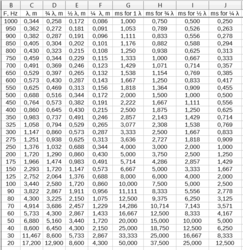"Generally speaking, speakers need to be _in_ the room not against the walls..."
I used to accept that Myth until I became an Acoustician and found the tested reality to be generally the opposite. Here is a pair of Celestion Ditton 66 kissing the Front Wall Blue, vs about 1M distant Red.
"No "echo chamber" here... The OP posted a general question without much information to go on like room size, shape or current acoustic treatments... I responded with some "general" information and a link to a place that could provide more information about speaker placement and a "handy" calculator..."
I am afraid this is exactly what I was talking about. Cardas have their own unique and aberrent views on optimum placement and terminology. e.g. Their Front Wall is probably our back wall.
Some Calculators predict an identical null when the woofer centre is equidistant to the Front and Side Walls.
But given a central listening position, there would be a different length of path from woofer to ear and thus a different nulling frequency at the ear.
So that prediction, that Calculator is incorrect.
Unless of course one considers the null to occur at the speaker rather than the listener.
"Why do other manufacturers state otherwise?" Ask them perhaps or take a poll of how many say one thing or the opposite. I am not really up for first or second guessing or he said she said here.
Most of these recommendations are simply wrong acoustically, both theoretically and as measured by those of us that do this professionally.
However the incorrect or vague recommendations do seem to appear more in the Hi Fi Market rather than the Pro.
"Why do the various speaker manufactures "suggest" placing their speakers in various ways which, in my experience, "mostly" appear to be away from the walls? I am guessing that most of them have experience and insight into their own product designs and where, generally speaking, they might sound the best... Both of the OPs speaker Polk RTi A9 Front, Polk RTi A7 Front Wide manuals show a diagram that to me, shows the placement somewhat away from the front wall..."
Who knows? Perhaps they are afraid the Hi Fi world would be upset to read a decades old more was and is nonsense. Are you again suggesting a Poll of sources of myths? Does every manufacturer get an equal say irrespective of whether they present their reasons or not? Does the majority win irrespective of acoustic reality?
"Also consider that there are many various speaker and subwoofer designs that are not your "standard" speaker in a box design... Think electrostatic hybrid like Martin Logans, Magneplanars, Open Baffles, Line Arrays, Horns etc.. And not all Speaker designs have all the drivers firing forward... How well do you think these other designs sound against the wall?"
I think anyone using a Dipole would be well aware that none of the above applies to them at LF. Line Arrays tend to be HF only, horns usually ditto, why do you mention them? I think anyone using Bass Horn or Cardioid LF would also be well aware of the benefits of the diminished outputs to the rear and sides.
In the spirit of new and adding, do you have recommendations of why Dipole and indeed where to place them?











